
table of contents
- Characteristics
- Common varieties
- Location
- floor
- plants
- care
- to water
- Fertilize
- Repot
- Cut
- Toxicity
- wintering
- Multiply
- Diseases and pests
Profile and care information open +conclude -
- Flower color
- inconspicuous, white, green
- Location
- Penumbra
- Heyday
- May June
- Growth habit
- upright, expansive
- height
- up to 2.5 m high
- Soil type
- loamy
- Soil moisture
- moderately moist, fresh
- PH value
- neutral, slightly acidic
- Limescale tolerance
- Calcium intolerant
- humus
- rich in humus
- Poisonous
- Yes
- Plant families
- Holly Family, Aquifoliaceae
- Plant species
- Hedge plants, bedding plants, container plants, balcony plants
- Garden style
- Terrace garden, Japanese garden, pot garden
The Japanese holly, botanically Ilex crenata, is an evergreen, compact growing shrub. It is enjoying growing popularity, especially in the garden, as a replacement for bed frames made of boxwood. Visually almost indistinguishable from the boxwood, the Japanese holly is not susceptible to frequent Fungal diseases and pests that occur, such as the boxwood moth, attack entire hedges and the plants in no time can die. In addition, the ornamental shrub is not very expensive to maintain.
Characteristics
- botanical name: Ilex crenata
- Genus: Holly (Ilex)
- belongs to the plant family of the holly family (Aquifoliaceae)
- Trivial names: Bergilex, Buchsilex, boxwood substitute
- Height: 60 to 250 cm (depending on the variety)
- Spread: 40 to 120 cm
- Leaves: small, oval leaves with a smooth edge
- unlike other types of holly, no spines
- evergreen
- Blossom: inconspicuous, whitish-green flowers
- Flowering period: spring (May to June)
- Fruits: black, spherical berries in summer
- Growth: 10 to 30 cm per year
- Origin: Japan
- well hardy
Common varieties

Depending on the intended use, different varieties are suitable for planting:
- 'Dark Green' (Spoon Ilex): shiny green leaves, up to 2 m in height
- 'Dark Star': slightly darker foliage, perfect for topiary, very dense growth up to 130 cm in height
- 'Stokes' (Low Bergilex): perfect for hedges and spherical shapes, up to 80 cm in height
- 'Glory Dwarf': low growth height (up to 60 cm)
- 'Green Luster': broad, bushy growth, height between 30 and 150 cm, width 30 to 250 cm
- 'Fastigiata' (pillar anilex): slender habit, height between 1 and 2 m
- 'Golden Gem' (Gelber Bergilex): golden yellow foliage, height of growth up to 80 cm
Location
Partially shaded locations on the edge of a higher hedge or near wooded areas are perfect for the Ilex crenata. Some types of the shrub with the glossy, dark green leaves can also cope with full sun or rather shady places.
- Light requirement: partially shaded
- 4-5 hours of sun a day are perfect
- with moist soil also midday sun
- heat tolerant
- does not tolerate drafts in winter
- suitable as a low garden hedge, bed border
- Also as a topiary in the bucket for the terrace and balcony
floor
Among the many species of ilex, the Japanese holly is one of the undemanding plants. She prefers moist, fresh soils with a neutral pH value. However, if the pH value of the garden soil is significantly above or below 7, it should be adjusted in advance with a little peat or bark mulch or lime in the case of strongly acidic soils. The boxwood-like plant does not like waterlogging. Otherwise, the subsoil should be a little more humid than too dry so that Ilex crenata survives the winter undamaged. The optimal floor looks like this:
- can handle almost any normal garden soil
- moderately moist to moist and fresh
- pH: around 6-7
- not compatible with lime
- humic or loamy
- nutritious
- not too dry, but well permeable to water
plants
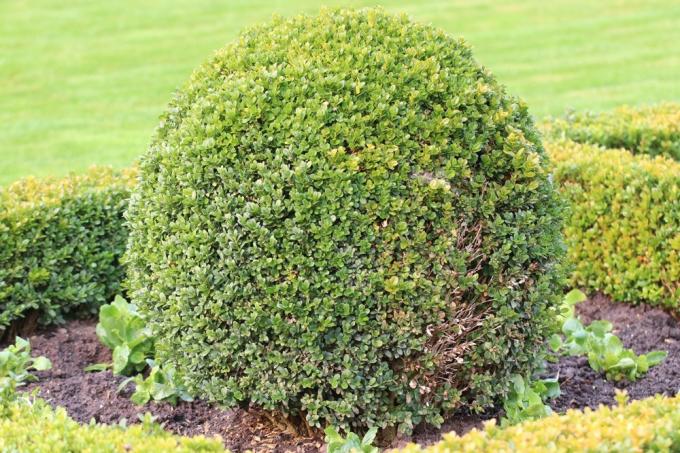
The Japanese holly is preferably planted in spring, when there is no longer any threat of severe frosts. When buying potted plants, it is important to touch the root ball by hand to tear open something or to cut open a little with secateurs to stimulate root growth. If you want to plant a border or a low hedge, you shouldn't save too much on plants so that it looks quite dense and bushy right from the start.
- best time: spring (early to mid-May)
- generally between spring and autumn
- Planting in pots is also possible in winter
- Loosen the soil well
- Improve calcareous soils with bog soil
- Planting depth: as before, a little deeper
- Water the pads well before planting
- Plant spacing: 10 to 15 cm
- Plants per meter: 7-8 for borders
- for taller specimens as a loose hedge: 40 cm planting distance
- insensitive to root pressure
Tub planting
Many Bergilex varieties can also be cultivated wonderfully in a planter. The prerequisites for good growth are high-quality potted plant soil and adequate drainage.
- Plant soil: high quality potted plant soil
- Alternative: garden soil, humus and sand
care
Like all plants, the Ilex crenata needs regular maintenance in the form of irrigation water and fertilizer. In ideal locations, however, the maintenance measures are limited. The evergreen bush is surprisingly healthy and adaptable. Topiary trees and hedges naturally require additional care in the form of regular pruning.
to water
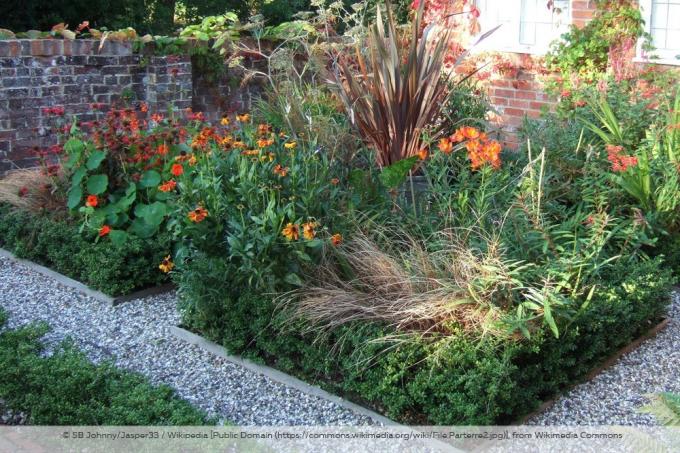
The Japanese holly prefers a slightly moist soil. The otherwise robust shrub does not tolerate severe drought. Nevertheless, it must not be watered too often, because waterlogging very quickly leads to rot and death of the roots.
- Potted plants
Therefore, always water potted plants abundantly so that the water runs out of the holes in the planter. Water caught in the saucer must be poured away after about 10 minutes. Before the next watering, however, the root ball should dry well again. Even during the winter months, the holly root ball should always remain slightly damp in the plant pot and must never dry out for a long time. If the plant is in a sheltered place, it is sufficient to moisturize it every week with a little lukewarm water or a few handfuls of snow.
- Outdoor plants
In an optimal location in partial shade, an Ilex crenata only needs to be watered in prolonged drought or extreme heat. The amount of water depends not only on the location, but also on the garden soil. While sandy soils store the water poorly and therefore has to be watered more frequently additional watering in very loamy or heavy soils often only every three weeks necessary.
- better to water less often, but more thoroughly
- about once a week in summer
- at temperatures above 30 degrees: about twice a week
- water preferably in the morning
Fertilize
Ilex crenata prefers nutrient-rich soils. Therefore, you should fertilize the ornamental shrub on nutrient-poor substrates about twice a year with a slow release fertilizer. The better the evergreen plants are supplied with nutrients, the better they develop in the growth phase.
- Time: between the end of March and the beginning of August
- Do not fertilize with nitrogen from mid-August
- Potash magnesia in August (for good winter hardiness)
- Outdoor plants: once or twice a year, depending on the soil conditions
- Container plants: fertilize with liquid fertilizer about once a month
- alternatively use slow release fertilizer
- Green plant fertilizers or palm fertilizers are suitable
Freshly repotted potted plants do not need any additional fertilizer for the next few months.
Repot
Older Ilex crenata have to be transplanted into a slightly larger pot about every two to three years. Repotting is more often necessary for young plants. If there is no more soil to be seen at the edge of the root ball, but only a dense network of roots, it is time for a larger pot.
- Time: spring (before new growth)
- Pot size: about 8 cm larger and a little deeper than the old vessel
- first create drainage from gravel, perlite or clay balls
- Tear open the root network by hand
- Depth of use: as before
- Fill up with soil and press down well
- then pour on lightly
If you choose a container that is too large for repotting, the root ball will not dry well after watering. In this case, the roots threaten to rot in the worst case.
Cut
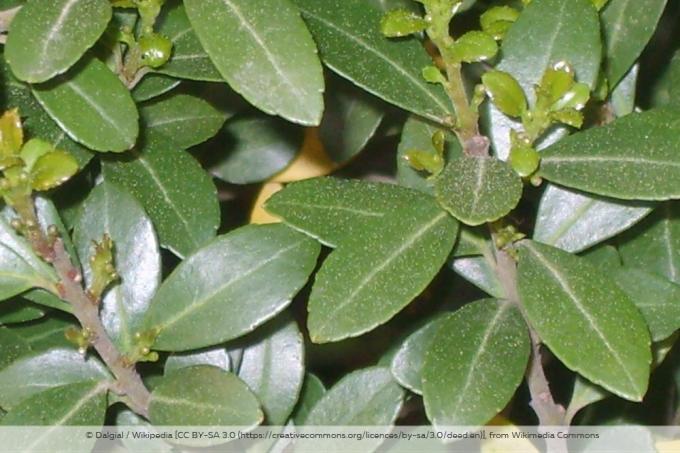
Uncut, some species of Bergilex reach a height of around two meters. With increasing age, the growth loosens a little and the shoots hang over slightly. As a rule, the Japanese holly is cultivated as a topiary because it is very easy to cut. The most popular areas of application include low hedges as a border, outdoor bonsai or attractive container plants in the form of a ball or pyramid.
- Growth rate: 10 to 20 cm per year
- usually two cuts a year necessary
- only cut young shoots (not into old wood)
- Pay attention to smooth cut surfaces
- only cut with sharp, clean tools
- do not cut in the rain or in the blazing sun
Plant pruning
Anyone who has planted a hedge or bed border made of Ilex crenata can prune them a little immediately afterwards. At this point it does not make sense to cut the hedge into shape. Only strongly protruding branches can be shortened with the scissors.
Spring cut
Many varieties of Japanese holly sprout yellow in spring. However, the young leaves will also turn dark green over the next few weeks. If you are bothered by the bright leaves in a hedge, you can easily cut it back in spring.
First summer cut
Otherwise, the Japanese holly is cut for the first time around the beginning of June, when the new shoot is about 10 centimeters long.
Second summer cut
If the plant has continued to grow over the summer and the hedge is somewhat out of shape, it is necessary to prune it again from the end of July to mid-August. The last cut of the year must not be made too late, i.e. not after mid-August. So the plant only sprouts lightly and the shoots can mature before winter. This is the only way to protect them from frost.
Toxicity
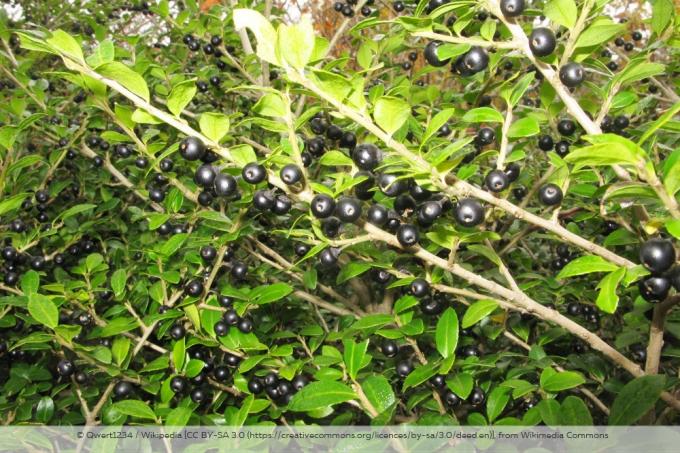
While the leaves and shoots of the Japanese holly are considered harmless, the black berries are poisonous to humans. However, they are a popular source of food for songbirds in the garden. Lately, varieties have also been bred that pose no threat and are therefore well suited for gardens with children or pets. These include, for example, the 'Dark Green' or 'Schlossgarten' variety, which do not produce poisonous berries.
wintering
Ilex crenata is very robust and, apart from regular cutting, hardly requires any special care. This also applies to the wintering of trees in the garden bed. However, this only applies to a limited extent to potted plants. In a pot on the patio or balcony, the roots of the Japanese holly must be protected from prolonged frost. In regions with a winegrowing climate, it is usually sufficient to place the bucket on a styrofoam plate in a sheltered place near the house wall during the winter. For all other regions with severe frosts the following applies:
- Wrap the planter with jute, fleece or bubble wrap
- Make sure to leave the drainage holes on the floor free
- Place the pot on a styrofoam plate (5 cm thick)
- sheltered location
- partially shaded
- Cover the root ball from above with straw or mulch
- if the dryness persists, pour above freezing point
Multiply
Propagating a Japanese holly yourself is not particularly difficult and can also be done by laypeople. It is advisable to always cut several cuttings at the same time, as a fairly high percentage does not take root. And not all seeds germinate reliably.
Seeds
If you have a lot of patience, you can use seeds to multiply the ilex. To do this, the ripe berries are harvested from the bush in October and simply pressed into a pot with a plant substrate. With poisonous varieties you should wear gloves. However, in the worst case, it can take two or three years for small plants to grow from the seeds.
- Time: October
- Plant substrate: cactus soil or seed soil (germ-free)
- Location: partially shaded and warm
- keep slightly moist
- Growing pots or indoor greenhouses are suitable
If you want to grow the plants as a border or hedge, you can cultivate a few seedlings from a berry together in a pot, as they will then grow particularly bushy. as bonsai or topiary you only need a single plant. Therefore, the seedlings should be separated as quickly as possible and planted in their own containers. Alternatively, you can of course take the seeds out of the berries and sow them in individual pots.
Cuttings
It is easier and more effective to propagate the Japanese holly with cuttings. It is best to cut cuttings from a slightly woody shoot in late summer.
- Choose strong, healthy shoots
- preferably at the second cut of the year
- Length: about 15 to 20 cm
- stick directly into the garden soil
- alternatively put in a pot with potting soil
- Location: partially shaded
- keep slightly moist
It usually takes a few weeks to months for the cutting to take root.
Diseases and pests
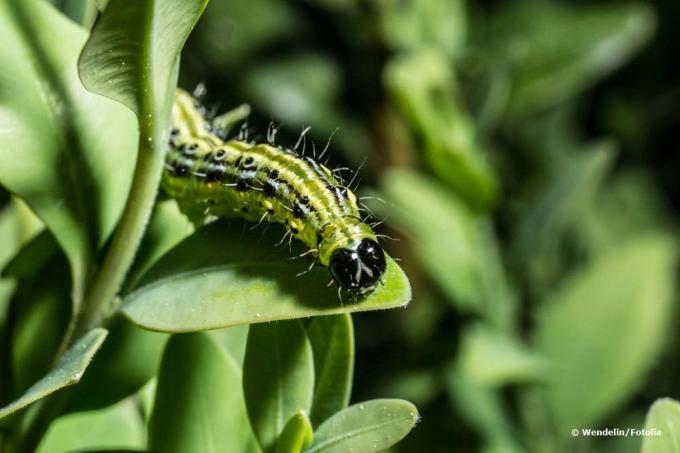
Ilex crenata is much more resistant than box trees. It shows itself to be insensitive to various fungal diseases and pests. The box silex can therefore also be planted in places where the box mushroom has ravaged. However, a Japanese holly can also be attacked by pests or become sick.
Chlorosis
If not only the young shoots turn yellow in spring, but also a large number of leaves, this is usually due to a lack of iron. An iron chelate fertilizer is therefore useful. However, the cause is often too high a pH value in the soil. In this case, a slight lowering of the pH value with bog soil, conifer bark or acidic fertilizers (such as rhododendron fertilizers) can help.
Fungal diseases
As a rule, an infestation with fungi only occurs if the soil is too wet or heavy. If waterlogging persists, the roots of the shrub rot and fungi can penetrate the damaged roots. An infestation of dead and black discolored root tips with a whitish coating is recognizable.
Spider mites
In unfavorable weather conditions or in warm winter quarters, the Bergilex can occasionally be infested with sucking pests. If the environment is very dry and warm for a long time, spider mites can spread very quickly. Fresh shoots wither and die. If the infestation is severe, the typical white webs of the mites can be seen.

